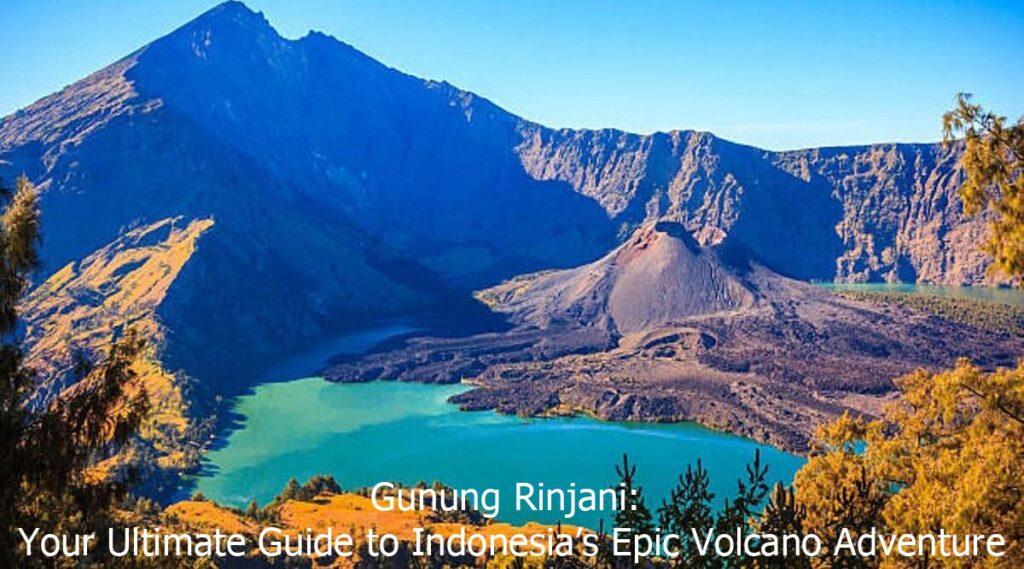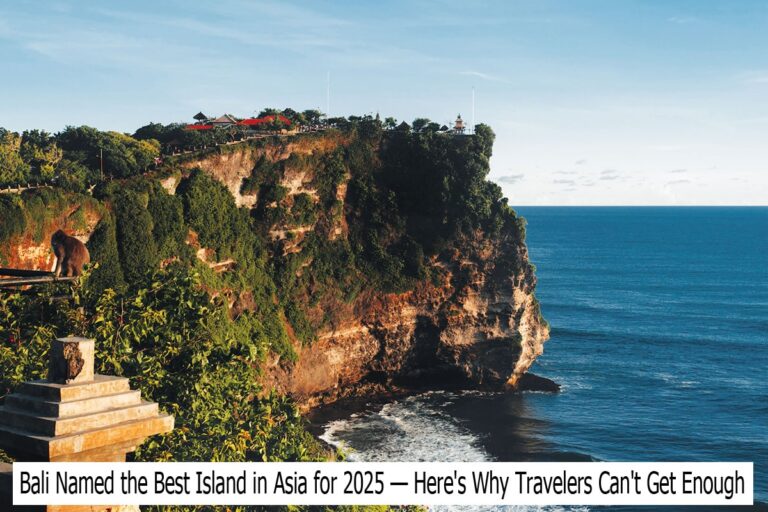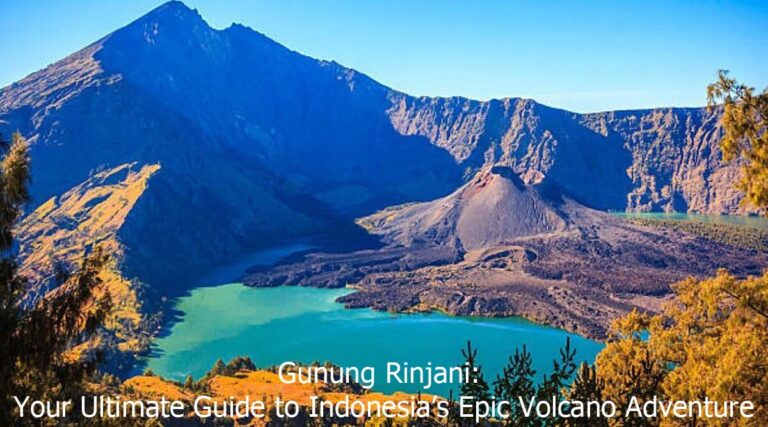
Gunung Rinjani
If you’re dreaming of conquering one of Indonesia’s most stunning active volcanoes, Gunung Rinjani is calling your name. Towering at 3,726 meters above sea level, this Lombok giant isn’t just tall — it’s packed with breathtaking views, challenging trails, and hidden natural gems like crater lakes and hot springs. But before you lace up your hiking boots, let’s break down everything you need to know to make your Rinjani trip safe, fun, and unforgettable.
1. Introduction: Meet Gunung Rinjani
Gunung Rinjani is Indonesia’s second highest volcano, located on the island of Lombok in West Nusa Tenggara. It’s an active volcano, meaning it’s alive and kicking (but don’t worry, it’s monitored closely). Besides the impressive height, Rinjani is famous for its spectacular crater lake, Segara Anak, nestled deep inside its caldera.
What makes Rinjani a favorite for hikers and nature lovers?
- Epic panoramic views from the summit.
- Diverse ecosystems from tropical forests to alpine zones.
- A great opportunity to experience a unique cultural encounter with the local Sasak people.
- Not to mention the excitement of climbing one of Indonesia’s most famous volcanoes.
Here’s the point, though: climbing Rinjani isn’t straightforward. Understanding the trails, the best seasons, and official procedures is crucial to having a smooth and safe adventure.
2. The Best Time to Climb: When Rinjani Is in a Good Mood
Think of Rinjani as a moody diva — she shows her best self only during certain times.
- Official climbing season: April to December.
- June to August is the busiest time of year; it’s sunny and dry.
- The months of January through March are off-season due to landslides, monsoon rains, and cleared paths.
During the rainy months, the mountain becomes a slippery mess, and dangerous conditions like landslides and thick fog make hiking risky. So unless you want to slide down the mountain on your butt like a toboggan, plan your trip within the official season.
Temperatures at the summit can drop to near freezing, so pack thermal layers and get ready for chilly nights. Also, watch out for sudden weather changes — fog, strong winds, and even thunderstorms can show up uninvited.
3. Getting There Legally: Permits, Quotas & Official Rules
Gunung Rinjani isn’t your neighborhood hill; it’s a protected national park with strict regulations.
- Book your permit online via the official site (booking.rinjaninationalpark.id) at least 1-14 days before your hike.
- There’s a daily quota for climbers to protect the environment:
- Sembalun trail: ~150 people/day.
- Senaru trail: ~100 people/day.
- Sembalun trail: ~150 people/day.
- No permit = no entry. And don’t try sneaking in; it’s illegal and dangerous.
- Fees apply and differ for locals and foreigners, covering conservation and insurance.
On arrival, you must register at the base camp, show your permit, and confirm your group details. Trying to climb without following these steps is a one-way ticket to disappointment.
4. Tips to Make Your Rinjani Trek Safe & Fun
Ready to conquer the volcano? Keep these survival tips in mind:
- Hire a guide and porter. It’s not cheating — it’s smart. They know the trails, carry your heavy gear, and keep you safe.
- Prepare physically and mentally. Train before your trip, bring warm clothes, and pack essentials like a headlamp, first aid kit, and enough food and water.
- Respect the environment. Don’t litter, avoid loud music, and take all your trash down with you.
- Stay hydrated and listen to your body. Altitude sickness is real. Don’t push yourself too hard.
- Start early and check weather forecasts. Better safe than sorry.
5. Crater Lake, Hot Springs, and Magnificent Views as the Reward
Waiting beyond the top lies Rinjani’s real magic:
- Segara Anak Lake: A stunning turquoise crater lake surrounded by steep cliffs — perfect for camping and photos.
- Active crater: See steam vents and bubbling sulfur up close (but don’t get too close!).
- Natural hot springs: Relax your sore muscles in warm, mineral-rich water — nature’s own spa.
Camping near the lake lets you soak in this beauty and recharge before your summit attempt or descent.
6. Your Ultimate Rinjani Checklist
Here’s what you absolutely need to bring:
- Permit and ID.
- Warm layers, gloves, hat.
- Sturdy hiking boots and sandals.
- Tent and sleeping bag.
- Enough food and a portable stove.
- Minimum 2 liters of water per day.
- Headlamp with spare batteries.
- Basic first aid kit and personal meds.
- Trash bags to pack out all waste.
- Camera or smartphone for those Insta shots.
Final Words
Climbing Gunung Rinjani is an emotional rollercoaster — challenging, breathtaking, sometimes tough, but always rewarding. With the right preparation, respect for nature, and a spirit for adventure, you’ll not only reach the summit but make memories (and stories) that last a lifetime.
Are you prepared to leave for Rinjani and begin your journey? Remember to be mindful of the mountain, be careful, and savor each moment of the journey!



